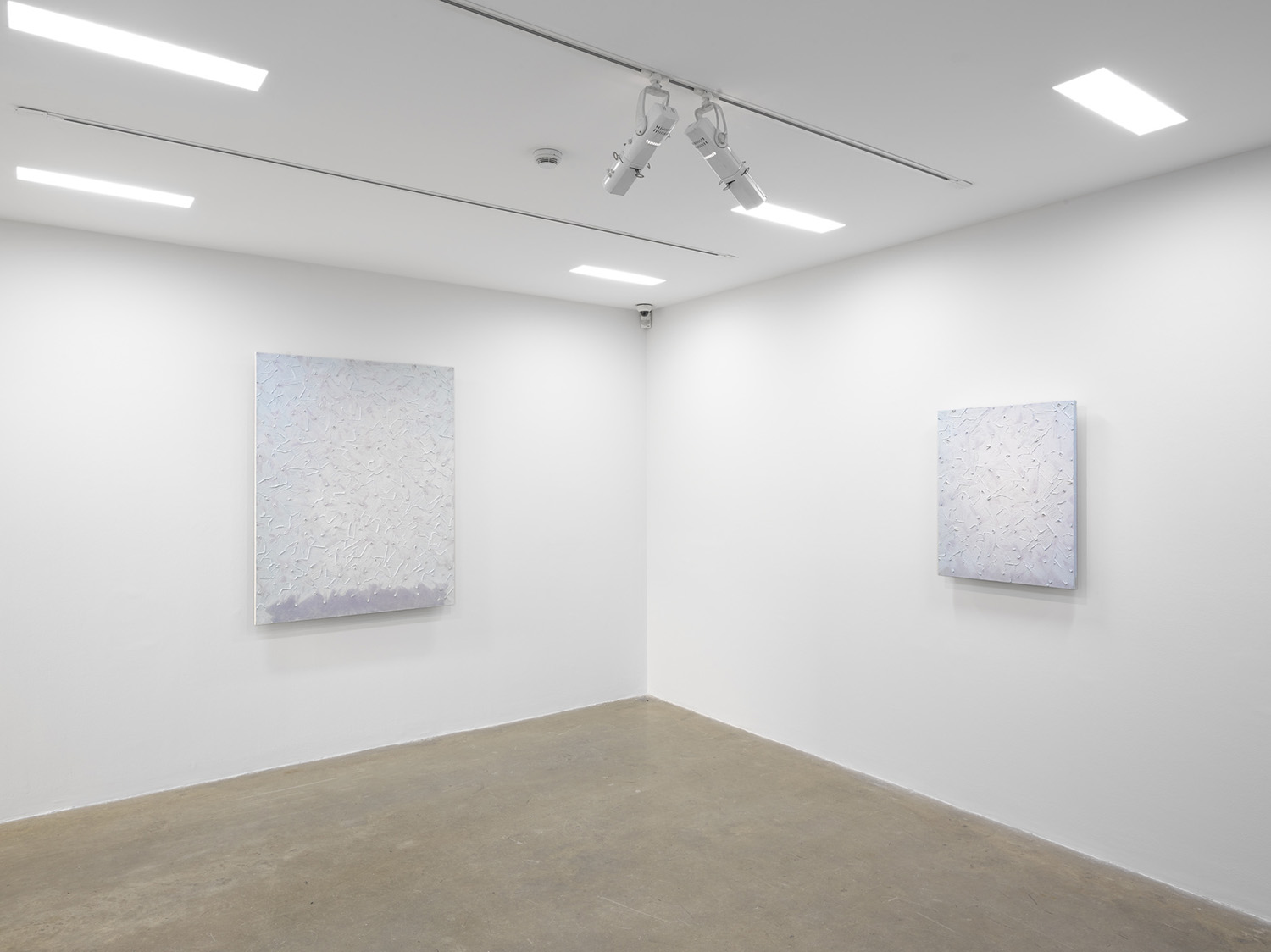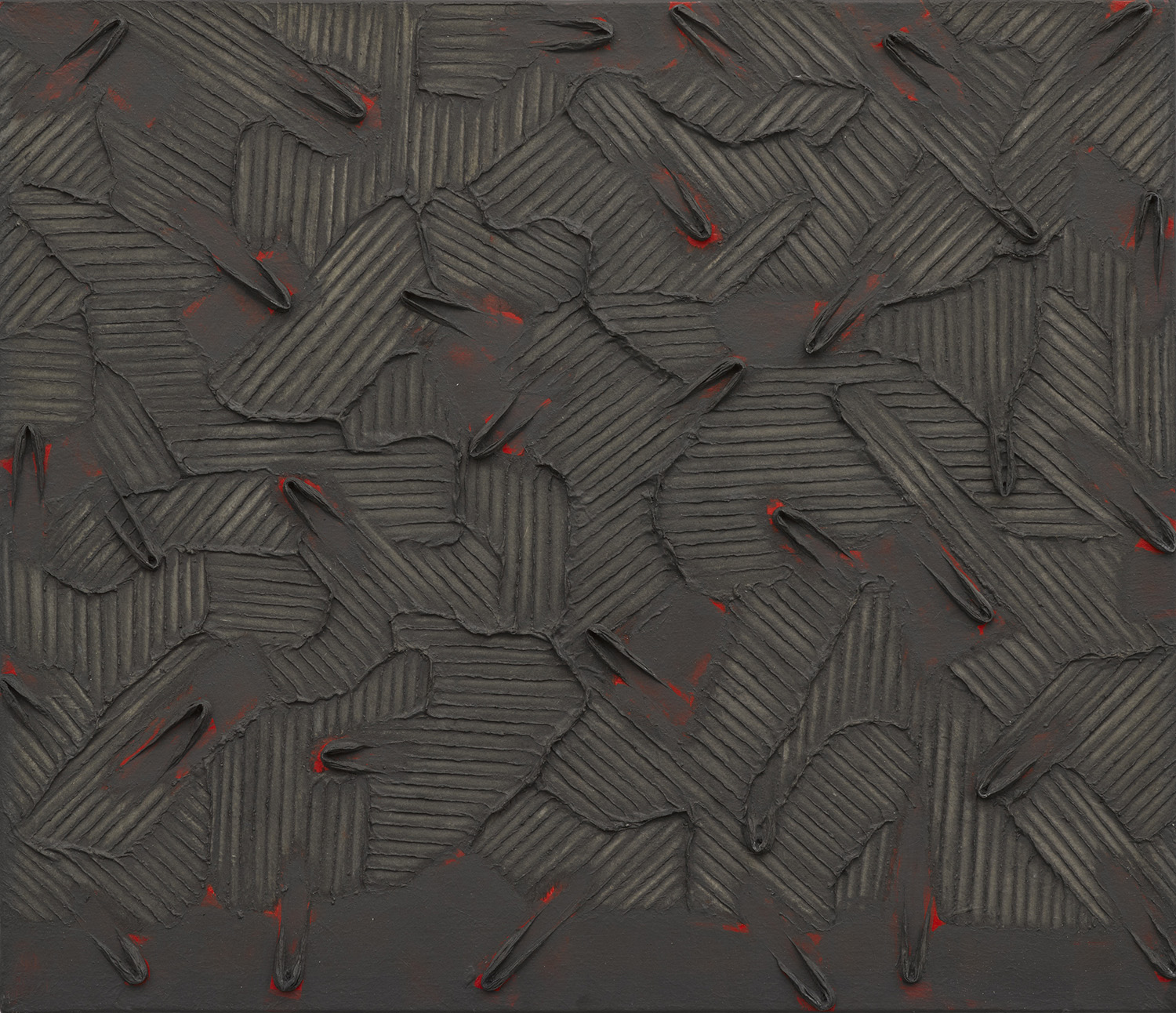Shows
Park Seo-Bo’s “Zigzag: Ecriture 1983–1992”


Recent years have seen a surge of market interest in Korea’s Dansaekhwa artists. Pieces sold for tens of thousands of dollars a few years ago fetch millions today, and major international galleries have been quick to catch on. “Zigzag,” the second show by Park Seo-Bo at White Cube Mason’s Yard in as many years, owes much to this growing taste for austere yet aesthetically pleasing work with an emphasis on process. However, the proliferation of Western interest in a group of artists who had previously gone largely unnoticed outside of Korea, and on whom relatively little is written, risks couching practices such as Park’s in the language of an art history that is not their own.
Western art certainly influenced the movement in which Park played a key role, lending its materials and procedures if not its aesthetic and philosophical rationale. It was he, in fact, who brought the principles and techniques of Western abstraction to Korea when he founded the Korean Modern Artists Association in 1957. This said, the works in “Zigzag,” and the rest of the 50-year “Ecriture” series (1967– ) to which they belong, must be considered on their own terms to be meaningfully experienced, if not understood. It is especially egregious to equate this work with minimalism, the efforts of whose practitioners constituted a reaction against tradition, as the Dansaekhwa artists sought rather to engage with a notion of the past, one underpinned by an aesthetic, societal, and philosophical understanding of nature.

In the pieces displayed at White Cube, this engagement relies not on a process of abstract reductionism, as in minimalism, but of cumulative layering. Although Park practices a style of reduction towards an expression of nature that he calls “pure emptiness,” this emptiness is not expressed in the optical qualities of the canvases, but in the iterative processes they document.
The “Zigzag” pieces, created in the 1980s and early 90s, cannot rightly be called paintings. Unlike his earlier oil-based “Ecriture” works, they employ hanji—a traditional Korean paper made from mulberry bark—which is soaked in water and layered onto the canvas with pigment. The artist then scratches recursive patterns into the surface with a variety of implements before pinching the raised edges with canvas pliers. Unlike “Western” paper, which is written on, here the unique texture and cultural significance of hanji mean that it may be written with.

In trying to categorize these artworks, the name “Ecriture” is itself layered with irony; by referencing a formalized system of encoding and interpreting the world, it risks undermining any direct appeal to the “pure emptiness” of nature. The name may be better understood through comparisons between Park’s work and calligraphy, the Taoist understanding of which places emphasis not on the text, but on a contemplation of the strokes that created it. Such a meditative focus on highly repetitive gestures is crucial to experiencing these works. It provokes a feeling of semantic satiation—as when an excessively repeated word loses its meaning—and dissolves both visual and verbal language. This dissolution hints at an enigmatic universal truth, but over time the iterative act also establishes a process and aesthetic, exceptions to which become repudiations of that universality and imply specific natural phenomena.

Such anomalies appear in the selective use of line and pigment: three subtle lines, breaking the ubiquitous zigzag pattern on a sand-colored canvas, evoke the lapping of shallow water as well as all the forces of light and tide that go with it; the pigment patching another canvas recalls metal ore and oxidization; elsewhere, a vivid red glows through dark, basaltic gray and suggests smoldering heat. These applications of pigment should not be understood as describing the color of things, but the nature of things.
Écritures these are not. Despite the title of the series to which the artworks in “Zigzag” belong, they deal not in language, but in its dissolution. In the emptiness of effable meaning achieved through copious repetition, these canvases seek a common referent with a natural world whose processes are repetitive and wordless. With further retrospectives likely on the horizon, it speaks to Park’s credit that, having made repetition his business over five prolific decades, the work here remains anything but tedious.
Park Seo-Bo’s “Zigzag: Ecriture 1983–1992” is on view at White Cube Mason’s Yard, London, until March 11, 2017.







